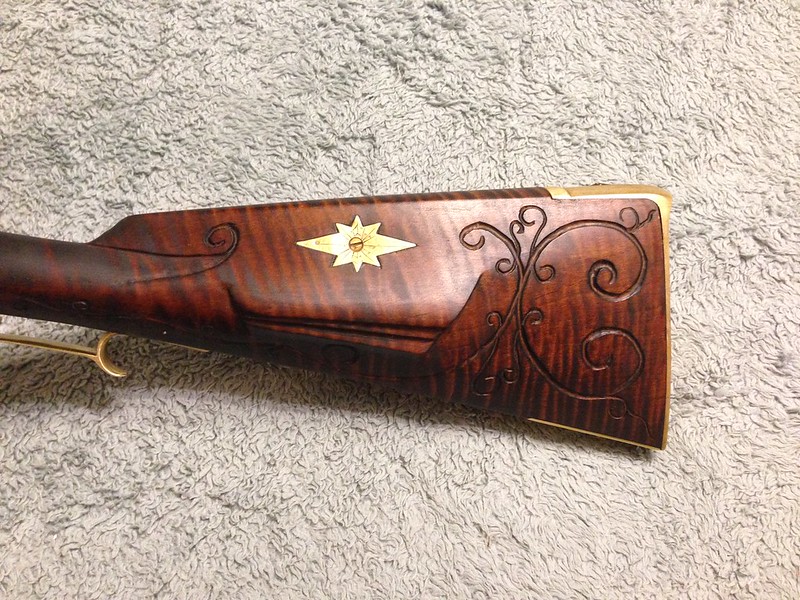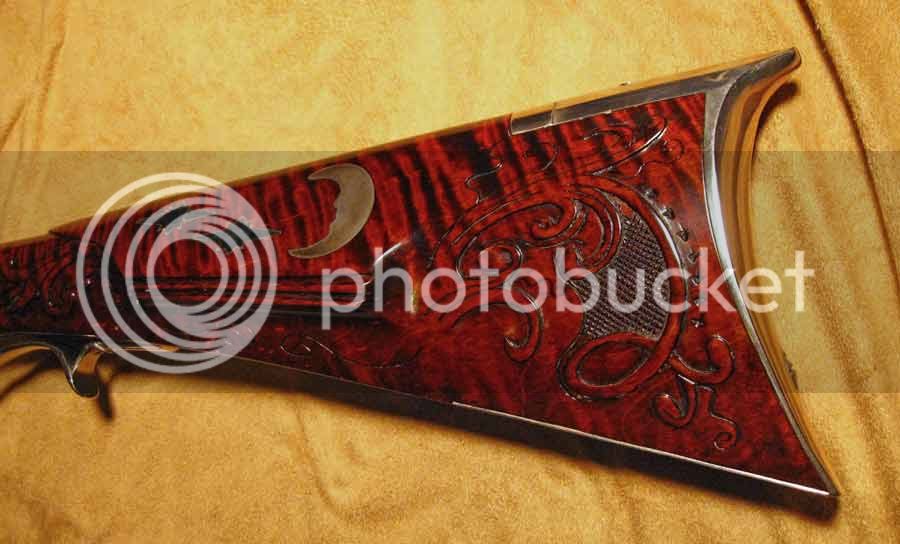This is THE color found on the average 18th-19th century American rifle (assuming it is not finished with linseed oil, which makes it somewhat darker and redder).
Just randomly selected from Aspenshade's website.
Aqua Fortis (neutralized with lye) creates a sort of light to medium orangy-brown color on sugar maple. This color right here ^^^ It does seem to generally make a more brown color on red maple, but I rarely use red maple. Each piece of wood will be different, of course, but all I have done so far fall very close to the original gun shown above. Some old guns are even brighter orange. I can reproduce this effect by immediately heating the Aqua Fortis on the stock without letting it dry and "pre-darken".... not that I ever want to actually do that... :haha:
The grain is bright and clear and "chatoyant" (a French word... ugh, French... :haha: ). No extra staining, NO "rubbing back". Guns like the above appear to have been finished by filling the grain with shellac (or whatever other lac. I like Buttonlac), and an oil varnish is applied to the surface as a top coat. The shellac keeps the grain light and clear, and keeps the curl from looking painted on (as I think it does when people use pigment/aniline dyes, and especially when it is "rubbed back"). The darkness in some of the curl exhibited above, and the darkness on many other old rifles that still have much of their old oil varnish on the surface, seems to be from the oil varnish turning a dark, smoky, almost metallic black (which is NOT "oxidation". I have been told that it is caused by the lead type drying agents working their way to the surface... or something, I don't remember! :grin: ). I think some of the oil varnish would have gotten down into the end grain of the curl in some places where the shellac didn't fill the grain sufficiently.... along with 200+ years of dirt and grime. The stock was not intentionally stained to make the curl look black.
I have seen some old rifles that are pretty black all over, even deep in the wood. This would likely be caused by unneutralized Aqua Fortis, which will turn quite dark over time, or by acidic linseed oil finishes, which can also turn quite dark... or both.
:wink:








